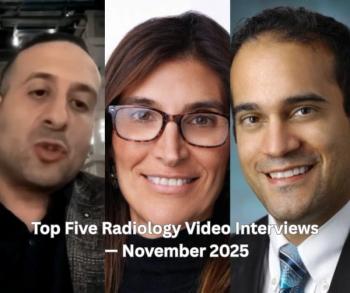
Diagnostic Imaging Europe
- Diagnostic Imaging Europe Vol 26 No 3
- Volume 26
- Issue 3
Imaging community mourns loss of colorful CT specialist
The world of medical imaging will miss Linda Clarkson, who passed away unexpectedly in March.
The world of medical imaging will miss Linda Clarkson, who passed away unexpectedly in March. Not only was she a warm, friendly, and genuine person who was fun to be around, but she was also a talented and progressive-thinking radiographer and educator.
Linda was a prolific and valued contributor to DI Europe, along with her partner, Paul Arnold. When I first met them in the mid-1990s, they were working as radiographers at St. James' University Hospital in Leeds, U.K. They had developed a detailed knowledge of clinical protocols used in spiral CT, and had been recommended to me as potential authors. We published their first article as the cover story in our April 1997 edition, and it received really positive feedback. Linda and Paul were thrilled with the recognition in a magazine widely read by European radiologists.
One of Linda's many virtues was her willingness to share her expertise with others. When Frances Rylands- Monk-now a contributing editor based in northern France-joined DI Europe in 1997, I asked Linda and Paul if Frances could spend a day with them in order to learn about clinical practice. They agreed straight away and couldn't do enough for her, and Frances benefited greatly from the experience.
In her post as a clinical radiographer (advanced practitioner), Linda became part of the multidisciplinary team for gynecological cancer, and was sponsored by Cancer UK to undertake research within the field of ovarian cancer. She then became a lecturer at the University of Bradford and was postgraduate course leader in CT and cranial CT reporting. Given her enthusiasm, commitment, and passion for the subject, hundreds of radiography students must have been inspired by her teaching.
Linda wrote many articles and research papers; last year she produced a textbook for radiographers new to CT and published a case report on intrathoracic renal ectopia in the British Journal of Radiology. She also presented regularly at national and international congresses, including the UKRC, ECR, and RSNA. I would often see her and Paul at the departure lounge in Manchester Airport, and enjoyed many friendly chats with them. She was always bursting with life and fresh ideas. During the UKRC in June, Paul will be presenting on her behalf about radiography education.
Linda was a colorful personality, and it was fitting that guests at her funeral were asked not to wear black. She loved fun, which was highlighted when she made the long trek to North Wales with Paul to attend a salsa charity concert that I'd helped to organize last summer.
“Gone too soon” was the simple message in the announcement in the Yorkshire Evening Post. Nobody would disagree with those words.
Articles in this issue
over 15 years ago
Advantages push lung MR imaging closer to use in clinical practiceover 15 years ago
Politicization of radiation debate increases risk of misinformationover 15 years ago
Case of the Issueover 15 years ago
Imaging tools transform diagnosis of osteoporosisover 15 years ago
Airport scanners raise the ceiling on a fear of flyingNewsletter
Stay at the forefront of radiology with the Diagnostic Imaging newsletter, delivering the latest news, clinical insights, and imaging advancements for today’s radiologists.



























